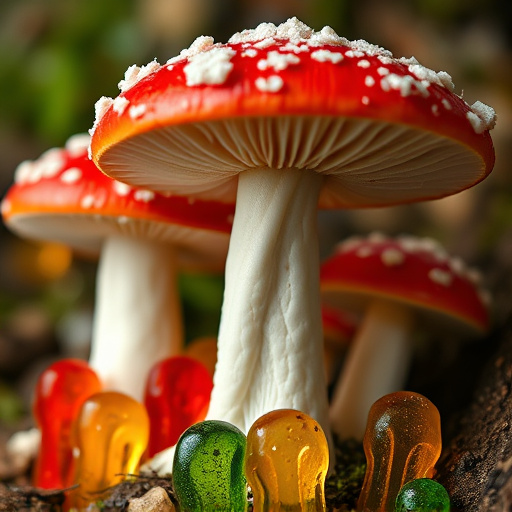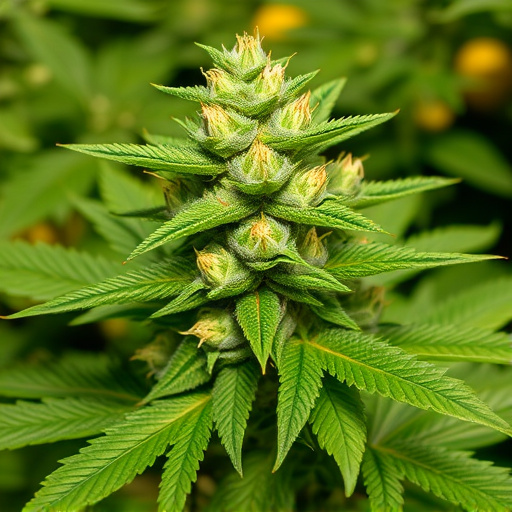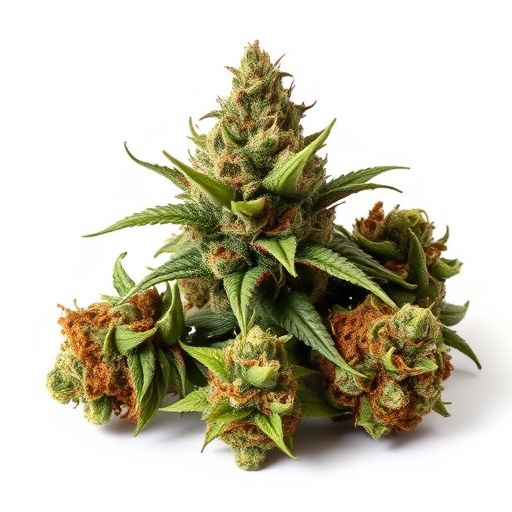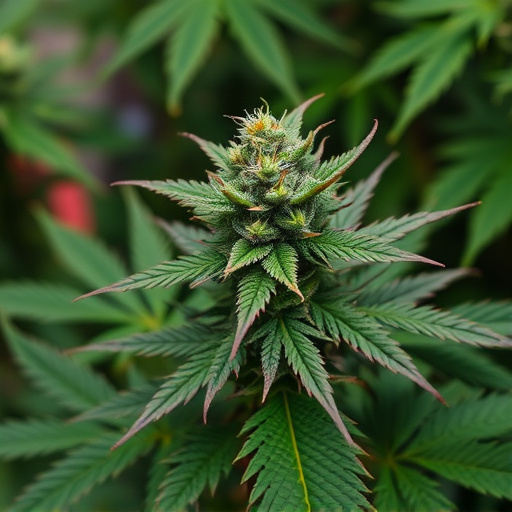Cannabis chemistry is shaped by cannabinoids (like THC and CBD) and terpenes, which determine its effects on mood, cognition, pain, and appetite. Terpenes modulate cannabinoid potency and create diverse chemical profiles in strains. Genetic diversity results in varying cannabinoid and terpene profiles, offering therapeutic benefits for conditions like depression. High-CBD, low-THC strains are popular for non-intoxicating properties. The cannabis experience is personalized by biological factors, tolerance levels, and environmental context, influencing how individuals react to different strains for managing depression symptoms.
“Unraveling the complex world of cannabis effects involves exploring its diverse chemical makeup. This article delves into the intricate relationship between cannabis chemistry, genetic diversity, and individual variations. We examine how cannabinoids and terpenes, often overlooked, significantly impact the user’s experience. Furthermore, we uncover the influence of genetic diversity in cannabis strains on their unique profiles, particularly focusing on potential benefits for mental health conditions like depression. By understanding these factors, you’ll gain insights into navigating the diverse landscape of cannabis strains.”
- Understanding Cannabis Chemistry: The Role of Cannabinoids and Terpenes
- Genetic Diversity in Cannabis Strains: Unlocking Different Profiles and Effects
- Individual Factors Shaping Cannabis Experience: Biology, Tolerance, and Environment
Understanding Cannabis Chemistry: The Role of Cannabinoids and Terpenes

Cannabis chemistry is a complex interplay of various compounds, with cannabinoids and terpenes playing pivotal roles in determining its effects. Cannabinoids, such as THC (tetrahydrocannabinol) and CBD (cannabidiol), are responsible for many of the well-known impacts of cannabis on the mind and body. THC primarily induces psychoactive effects, while CBD offers a range of therapeutic benefits without the same level of intoxication. These compounds interact with our endocannabinoid system, influencing mood, memory, perception of pain, and appetite.
Terpenes, on the other hand, are aromatic compounds that give cannabis strains their distinct scents and flavors. They also contribute to the overall experience by modulating the potency and effects of cannabinoids. For instance, myrcene, a common terpene, is known for its relaxing properties, making it potentially beneficial for managing anxiety and promoting sleep, especially in cannabis strains used for depression treatments. The combination of cannabinoids and terpenes creates a unique chemical profile for each strain, resulting in varied effects that cater to different medical needs.
Genetic Diversity in Cannabis Strains: Unlocking Different Profiles and Effects

Cannabis has gained significant attention for its diverse range of effects, and a key factor in this variability is genetic diversity. The vast array of cannabis strains available today is a result of centuries of selective breeding and cultivation, leading to an incredible spectrum of chemical compositions and corresponding effects. Each strain possesses unique cannabinoid and terpene profiles, which play a crucial role in determining the plant’s therapeutic potential, including its ability to alleviate symptoms of depression for some users.
For instance, certain cannabis strains known for their high CBD (cannabidiol) content have gained popularity among individuals seeking relief from anxiety and depression without experiencing the psychoactive effects associated with THC (tetrahydrocannabinol). These non-intoxicating strains offer a promising avenue for research in the field of mental health treatment. The genetic makeup of cannabis plants determines the levels of these cannabinoids and terpenes, ultimately shaping the plant’s therapeutic profile and making some strains more effective than others for specific conditions, such as depression.
Individual Factors Shaping Cannabis Experience: Biology, Tolerance, and Environment

The experience of cannabis is highly individualized, shaped by a complex interplay of biological factors, tolerance levels, and environmental influences. Biologically, the human body’s response to cannabis varies significantly from person to person. The endocannabinoid system, responsible for regulating mood, memory, appetite, and pain perception, plays a crucial role in determining how an individual may react to different strains. Genetic predispositions can influence sensitivity to cannabinoids, such as THC, leading to varying experiences with cannabis strains for depression or other medical uses.
Tolerance is another critical aspect that influences the effects of cannabis. Regular users often develop a tolerance, meaning they require higher doses to achieve the desired effects. This can impact how individuals perceive and interact with different strains, including those sought for their therapeutic benefits, like those used for managing symptoms of depression. Environmental factors, such as setting and social context, also contribute to shaping one’s cannabis experience. A calming environment might enhance the relaxation-inducing properties of a particular strain, while a stimulating setting could amplify mental clarity associated with another.
Cannabis’ complex interplay of cannabinoids, terpenes, and genetic diversity significantly shapes its effects. Understanding these factors is crucial in navigating the vast array of cannabis strains available, especially those tailored for conditions like depression. By recognizing individual variations in biology, tolerance, and environmental influences, users can optimize their experience and potentially find relief while ensuring safety and responsible use.














